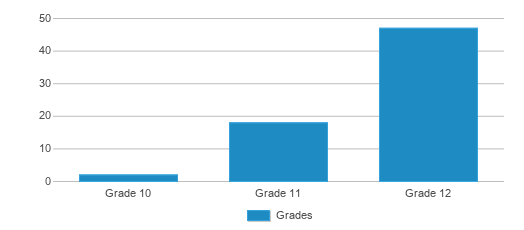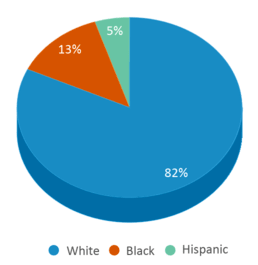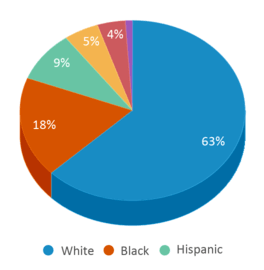Farmington Alternative High School serves 67 students inquire with school.
Minority enrollment was 18% of the student body (majority Black), which was lower than the Michigan state average of 37% (majority Black).
School Overview
School Type
Grades Offered
n/a
Total Students
67 students
Total Classroom Teachers
n/a
Students by Grade

School Rankings
Student : Teacher Ratio
n/a
17:1
American Indian
n/a
1%
Asian
n/a
4%
Hispanic
5%
9%
Black
13%
18%
White
82%
63%
Hawaiian
n/a
n/a
Two or more races
n/a
5%
All Ethnic Groups


School Statewide Testing
School District Name
Source: National Center for Education Statistics (NCES), MI Dept. of Education
Frequently Asked Questions
How many students attend Farmington Alternative High School?
67 students attend Farmington Alternative High School.
What is the racial composition of the student body?
82% of Farmington Alternative High School students are White, 13% of students are Black, and 5% of students are Hispanic.
What school district is Farmington Alternative High School part of?
Farmington Alternative High School is part of Farmington Public School District.
Recent Articles

The Impact of Coronavirus on Public Schools
This article discusses the widespread impact of COVID-19 on public schools, addressing issues such as school closures, remote learning challenges, effects on standardized testing, and concerns about student progress. It also provides tips for parents suddenly faced with homeschooling responsibilities.

What Public School Students Should Expect After COVID-19
In this article, we’ll take a closer look at the financial impact of COVID-19 on public schools and what to expect in the future. We’ll talk about the effects of budget cuts and other challenges affecting the public school system for the remainder of this school year and into the next.

February 05, 2025
Understanding the U.S. Department of Education: Structure, Impact, and EvolutionWe explore how the Department of Education shapes American education, from its cabinet-level leadership to its impact on millions of students, written for general audiences seeking clarity on this vital institution.





